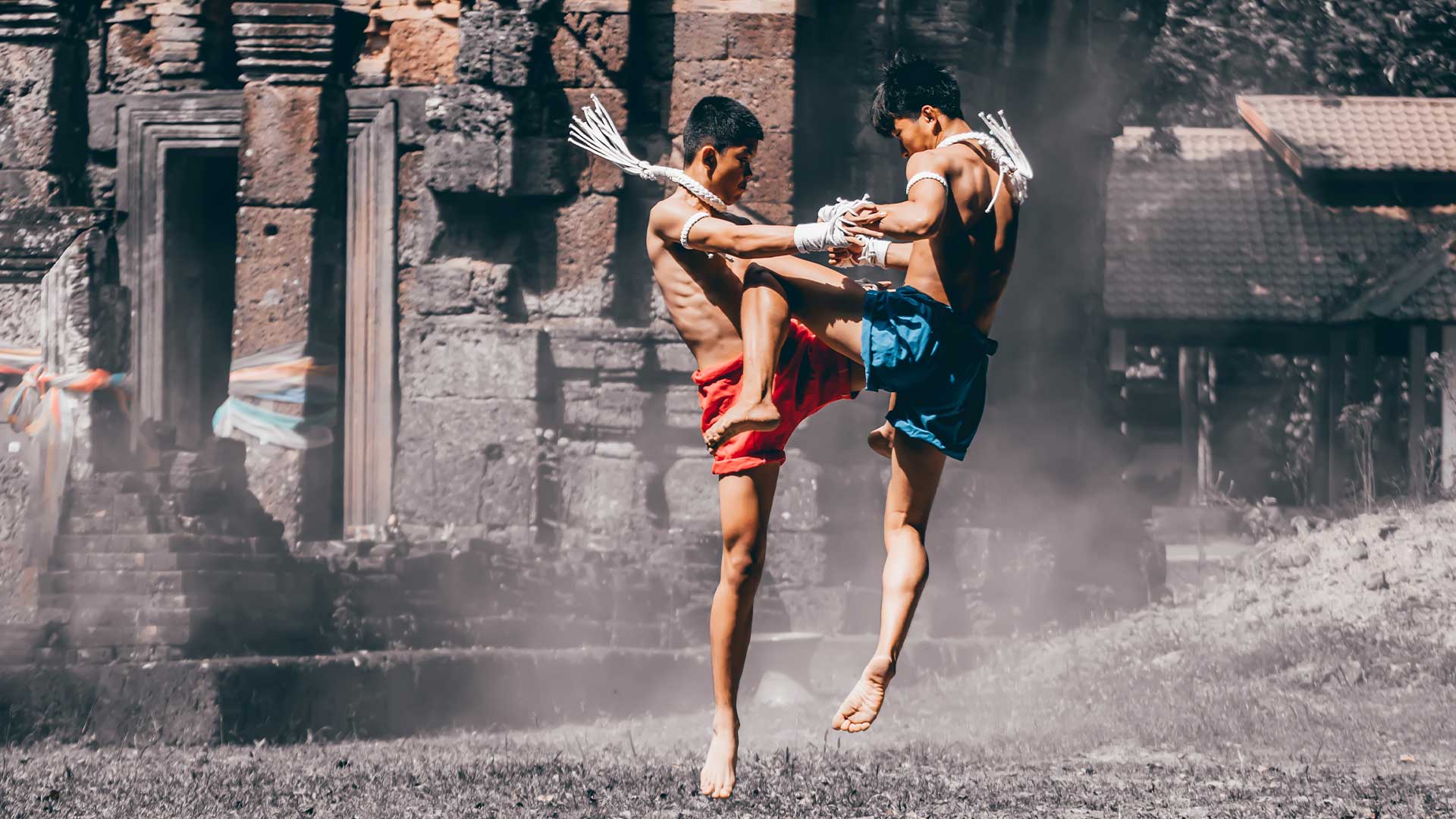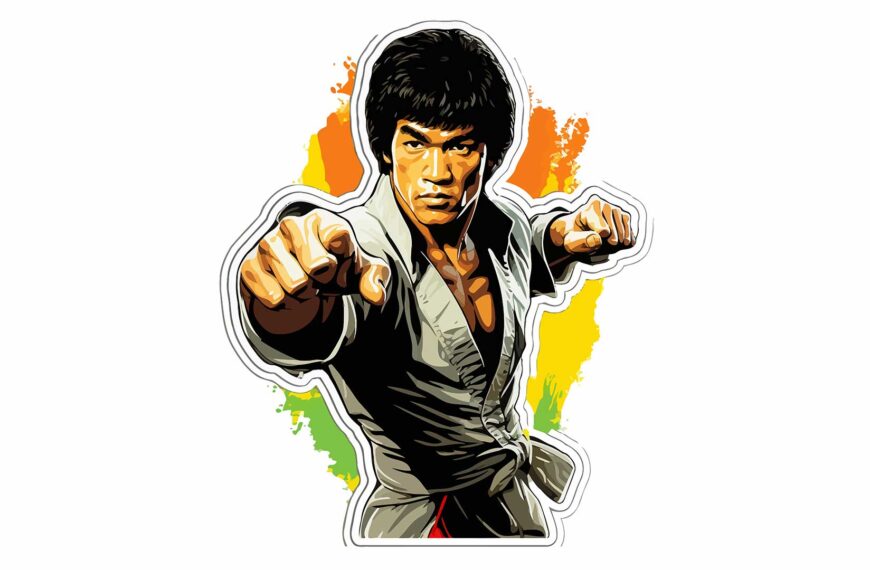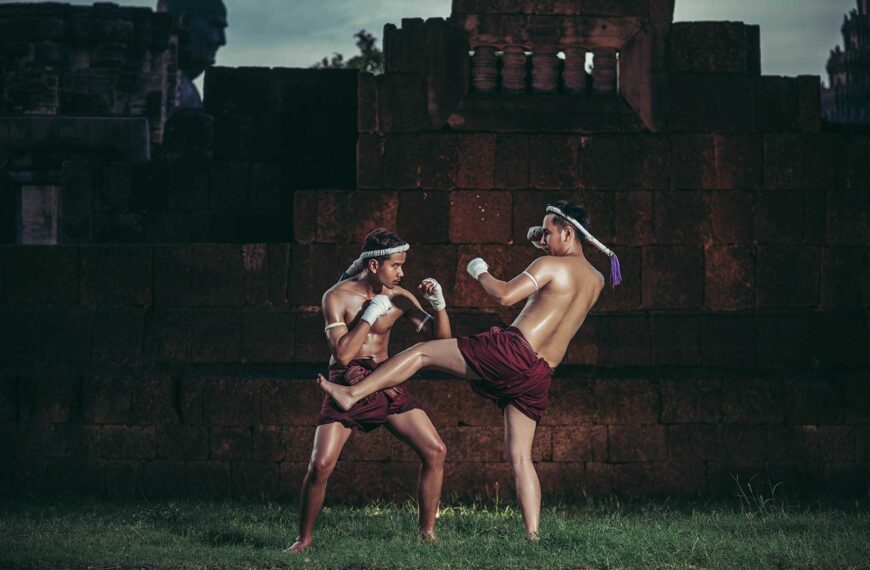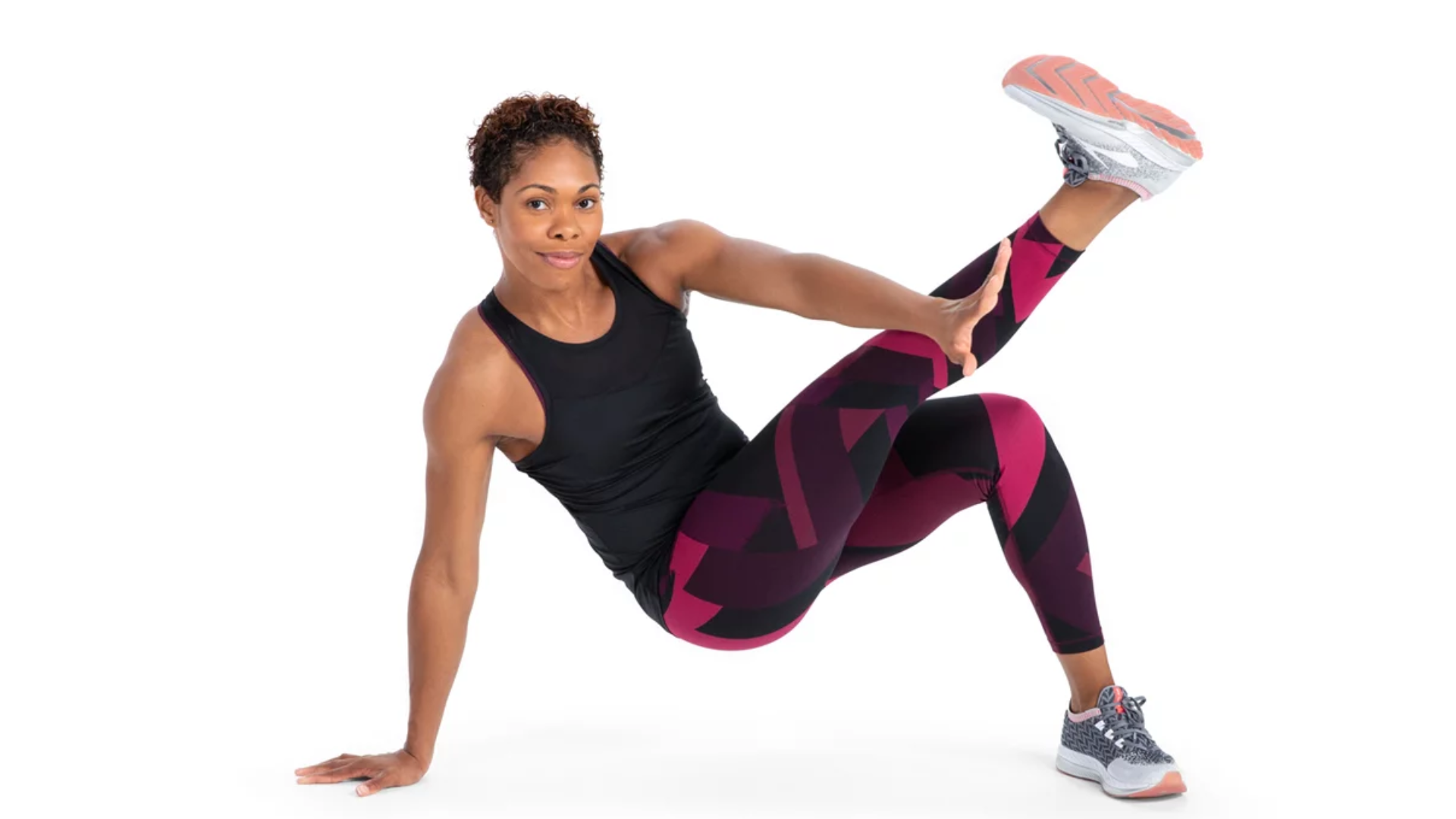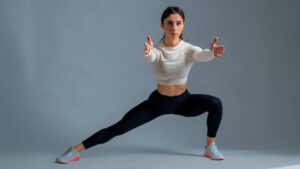What the reader will learn from this article:
- The historical origins of Muay Thai, tracing back to the Sukhothai dynasty in Thailand around the 13th century.
- The techniques and training methods used in Muay Thai, including attacking and defensive techniques, as well as the physical and mental benefits of training.
- The rules and regulations of Muay Thai competitions, including the scoring system and safety measures in place.
Muay Thai, also known as Thai Boxing, is a martial art and combat sport originating from Thailand. It involves various attacking techniques such as punches, kicks, knees, and elbows. Muay Thai has gained popularity worldwide and is deeply intertwined with Thai culture. It has also been incorporated into other combat sports, making it a formidable discipline in the world of martial arts.
The Historical Origins of Muay Thai
Ancient Roots
The history of Muay Thai can be traced back to the Sukhothai dynasty of Thailand around the 13th century. As recorded in Thai history, the first Thai army was formed during this period, and the soldiers were trained in hand-to-hand combat techniques. These techniques eventually evolved into the martial art we now know as Muay Thai.
However, the historical origins of Muay Thai are not well-documented due to various challenges. Illiteracy among practitioners and the destruction of records during historical events have made it difficult to trace the exact origins of this ancient martial art. The lack of historical records has given rise to legends and myths surrounding its creation and development.
Evolution and Development
Over the centuries, Muay Thai has evolved and developed, adapting to different historical periods and influences. One significant influence on the development of Muay Thai was the role of Thai kings. They recognized the importance of training their soldiers in hand-to-hand combat and integrated it into military training.
During the Ayutthaya period (1351-1767), Muay Thai became a crucial part of military training. Soldiers were taught various techniques to defend themselves in close combat. The art continued to evolve during the Rattanakosin period (1782-present), with the introduction of rules and regulations to ensure the safety of participants.
Modernization and Globalization
In the early 20th century, Muay Thai transformed from a battlefield combat technique to a regulated sport. Modern Muay Thai rules were established in the 1920s, with the introduction of weight classes and standardized equipment. This transformation allowed Muay Thai to gain popularity both within Thailand and internationally.
Today, Muay Thai is not only practiced in its country of origin but also around the world. Its effectiveness in self-defense and its integration into other combat sports, such as mixed martial arts (MMA), have contributed to its growing popularity. Muay Thai has become a recognized and respected martial art globally.
Understanding Muay Thai: Techniques and Training
Attacking Techniques
Muay Thai is characterized by its wide range of attacking techniques. Fighters are trained in punches, kicks, knees, and elbows, making it a versatile and dynamic martial art. These techniques are honed through rigorous training and practice, allowing fighters to deliver powerful strikes with precision.
The punches in Muay Thai include straight punches, hooks, and uppercuts. Kicks are executed with the shin and can target various areas of the opponent’s body. Knees and elbows are devastating close-range techniques that can cause significant damage.
Defensive Techniques
While Muay Thai is known for its attacking techniques, it also emphasizes defensive strategies. Fighters are trained in blocking, parrying, and evasive footwork to avoid incoming strikes. The defensive techniques in Muay Thai are essential for protecting oneself while conserving energy for counterattacks.
Training Methods
Muay Thai training involves a combination of drilling techniques, cardio exercises, and strength conditioning. Fighters spend hours perfecting their techniques through repetition and shadowboxing. They also engage in pad work, where they practice their strikes on training pads held by their instructors. Sparring sessions allow fighters to apply their skills in simulated combat scenarios.
Muay Thai training offers numerous physical fitness benefits. It is an excellent cardiovascular workout that helps burn calories and build endurance. The intense training sessions improve overall strength and flexibility. Additionally, the mental toughness developed through training can translate into other areas of life.
Dress Code
In traditional Muay Thai fights, fighters wear specific attire that reflects the cultural heritage of the sport. They don a Mongkol, a traditional headband, and Prajead, armbands, before the fight. These accessories hold symbolic importance and are believed to bring good luck and protection to the fighters.
During training sessions, fighters typically wear shorts and a t-shirt or tank top for comfort and mobility. It is essential to wear appropriate clothing that allows freedom of movement during training.
| Competition Format | Description |
|---|---|
| Rounds | Fights are divided into rounds, typically lasting three minutes each. |
| Judging Criteria | Fighters are judged based on technique, effectiveness, and overall performance. |
| Scoring System | The scoring system is based on a 10-point must system, with judges assigning scores at the end of each round. |
| Equipment | Fighters wear padded gloves, mouthguards, and groin protectors for safety. |
| Weight Classes | Weight classes are established to ensure fair matchups and reduce the risk of injury due to weight disparities. |
| Medical Checks | Fighters undergo medical checks before participating in professional fights. |
Muay Thai Rules and Regulations
Competition Format
Muay Thai competitions follow specific rules and regulations to ensure fair play and the safety of the fighters. Fights are typically divided into rounds, with each round lasting three minutes. The number of rounds may vary depending on the level and type of competition.
Fighters are judged based on their technique, effectiveness, and overall performance. The judges consider factors such as clean strikes, defense, ring control, and aggression. The fighter who demonstrates superior skills and control throughout the fight is declared the winner.
Scoring System
The scoring system in Muay Thai is based on a 10-point must system, similar to professional boxing. Judges assign scores to each fighter at the end of each round, with the winner of the round receiving ten points and the other fighter receiving a lower score.
In addition to clean strikes, judges also consider factors such as ring control, defense, and aggression when scoring. Point deductions may occur for fouls or rule violations, such as low blows or strikes to the groin.
Equipment and Safety Measures
To ensure the safety of the fighters, specific equipment is required in Muay Thai fights. Fighters wear padded gloves, mouthguards, and groin protectors. These protective measures minimize the risk of injury during the fight.
Before participating in a professional fight, fighters undergo medical checks to ensure they are in good health. Weight classes are also established to ensure fair matchups and reduce the risk of injury due to significant weight disparities.
Benefits of Muay Thai Training
Physical Fitness Benefits
Muay Thai training offers a wide range of physical fitness benefits. It is a full-body workout that enhances strength, endurance, and flexibility. The intense cardio exercises involved in Muay Thai training help burn calories and improve cardiovascular health. Regular training sessions can lead to improved overall fitness and body composition.
Self-Defense Skills
Muay Thai is highly effective in developing practical self-defense skills. The techniques learned in Muay Thai training can be utilized in real-life situations, providing individuals with the ability to protect themselves if needed. The focus on striking techniques and close-quarters combat makes Muay Thai a valuable skill for self-defense purposes.
Mental Benefits
In addition to physical fitness, Muay Thai training offers significant mental benefits. The discipline and dedication required in training can foster self-confidence and discipline. The mental toughness developed through challenging training sessions can translate into other areas of life, helping individuals overcome obstacles and persevere in their goals. Furthermore, Muay Thai training can serve as a stress-relieving activity, allowing individuals to channel their energy and emotions in a positive and productive way.
Muay Thai in Popular Culture
Influence on MMA
Muay Thai has gained significant popularity among Mixed Martial Arts (MMA) fighters. Its effectiveness in striking, clinching, and close-quarters combat makes it a valuable skill set in the MMA arena. Many MMA fighters incorporate Muay Thai techniques into their fighting style, recognizing its effectiveness in both stand-up and ground-and-pound scenarios.
Depiction in Movies and Media
Muay Thai has had a substantial impact on global culture, particularly in the realm of movies and media. The dynamic and visually striking techniques of Muay Thai have made it a popular choice for action movie fight scenes. Muay Thai fighters have been featured in movies such as “Ong-Bak” and “Kickboxer,” showcasing the art to a wider audience.
Recognition as an Olympic Sport
Muay Thai has gained recognition as an Olympic sport. This recognition has further elevated the status of Muay Thai and increased its global reach. The inclusion of Muay Thai in the Olympic Games provides athletes with the opportunity to compete on the world stage and showcase the beauty and skill of this traditional martial art.
Personal Story: The Transformative Power of Muay Thai
- Briefly introduce Muay Thai as a martial art and combat sport originating from Thailand
- Emphasize its popularity worldwide and its incorporation into other combat sports
A. Ancient Roots – Discuss the historical roots of Muay Thai, tracing back to the Sukhothai dynasty in Thailand around the 13th century – Highlight the lack of historical records and the challenges of tracing its origins due to illiteracy and destruction of records B. Evolution and Development – Explore how Muay Thai evolved and developed over time, adapting to different historical periods and influences – Discuss the role of Thai kings and military training in shaping the art of Muay Thai C. Modernization and Globalization – Explain how Muay Thai transformed from a battlefield combat technique to a regulated sport – Discuss the spread of Muay Thai worldwide and its integration into popular culture
A. Attacking Techniques – Explain the various attacking techniques involved in Muay Thai, including punches, kicks, knees, and elbows B. Defensive Techniques – Discuss the defensive techniques used in Muay Thai, such as blocking, parrying, and evasive footwork C. Training Methods – Discuss the focus on drilling techniques, cardio, and strength in Muay Thai training – Highlight the benefits of Muay Thai training, such as calorie burning, improved cardiovascular health, and mental toughness D. Dress Code – Discuss the traditional attire for fights and specific attire for training
A. Competition Format – Provide an overview of the specific rules and regulations followed in Muay Thai competitions B. Scoring System – Explain the scoring system in Muay Thai, including judges’ criteria and point deductions C. Equipment and Safety Measures – Discuss the equipment used in Muay Thai fights, such as gloves, mouthguards, and groin protectors – Highlight the safety measures in place to protect the fighters, such as medical checks and weight classes
A. Physical Fitness Benefits – Discuss the physical fitness benefits of Muay Thai, emphasizing its effectiveness in improving strength, endurance, and flexibility B. Self-Defense Skills – Highlight the self-defense skills gained through Muay Thai training C. Mental Benefits – Discuss the mental benefits of Muay Thai, including increased self-confidence, discipline, and stress relief
A. Influence on MMA – Mention the popularity of Muay Thai among MMA fighters and its incorporation into mixed martial arts competitions B. Depiction in Movies and Media – Discuss the role of Muay Thai in movies and its influence on global culture C. Recognition as an Olympic Sport – Highlight the recognition of Muay Thai as an Olympic sport and its impact on its popularity and global reach
**Imagine a story about a young woman named Maya who faced challenges in her life and how Muay Thai helped her overcome them.**
Maya, a young woman in her early twenties, had always struggled with low self-esteem and a lack of confidence. She often found herself feeling overwhelmed by the pressures of daily life and constantly doubted her own abilities. Seeking a way to break free from these limitations, Maya decided to try Muay Thai as a form of physical exercise and self-defense.
From the moment she stepped into the Muay Thai gym, Maya was greeted with a warm and supportive community. The trainers and fellow students encouraged her to push through her fears and embrace the challenges of the sport. Through the rigorous training sessions, Maya not only learned the various attacking and defensive techniques of Muay Thai, but she also discovered a newfound strength within herself.
As Maya continued her Muay Thai journey, she noticed positive changes in her physical fitness. She became stronger, more agile, and gained confidence in her body’s capabilities. But the benefits extended far beyond the physical realm. Muay Thai became an outlet for Maya to release stress and frustrations, allowing her to channel her energy into something positive.
The mental benefits of Muay Thai were equally transformative for Maya. The discipline required to master the techniques taught her perseverance and determination. As she pushed herself to overcome physical challenges in training, she began to believe in her own abilities outside of the gym as well. Maya no longer saw herself as weak or incapable, but rather as someone who could face any obstacle head-on.
Through her journey in Muay Thai, Maya not only developed physical strength and self-defense skills, but she also gained the mental fortitude to face life’s challenges with resilience and confidence. Muay Thai became more than just a hobby or a sport for herit became a transformative force that helped her overcome adversity and become the best version of herself.
- Summarize the main points discussed in the article, emphasizing the historical origins, benefits, and rules of Muay Thai
- Encourage readers to explore Muay Thai as a martial art and combat sport for physical fitness, self-defense, and personal growth
Conclusion
Muay Thai is a martial art and combat sport with a rich history, offering a wide range of techniques and training methods. Its origins can be traced back to ancient times, and it has evolved and modernized over the centuries. Muay Thai provides numerous physical and mental benefits, making it a popular choice for those seeking self-defense skills and overall fitness. Its influence extends beyond the martial arts world, with its presence in popular culture and recognition as an Olympic sport. Muay Thai continues to captivate and inspire practitioners and enthusiasts worldwide.
Common Questions
What is Muay Thai and why is it popular?
Muay Thai is a martial art from Thailand known for its powerful strikes and clinching techniques. It’s popular for its effectiveness in self-defense and as a competitive sport.
Who can practice Muay Thai?
Anyone can practice Muay Thai, regardless of age or fitness level. It offers a range of benefits for both men and women.
How does Muay Thai benefit physical health?
Muay Thai improves cardiovascular endurance, strength, flexibility, and overall fitness. It’s a full-body workout that burns calories and builds muscle.
What are the rules in Muay Thai fights?
Muay Thai fights have rules prohibiting certain strikes (e.g., groin strikes). Fighters also wear gloves and follow weight classes to ensure fair competition.
How can Muay Thai improve mental well-being?
Muay Thai helps develop discipline, focus, and mental toughness. It boosts self-confidence and relieves stress through the release of endorphins.
But isn’t Muay Thai too violent?
While Muay Thai is a combat sport, safety measures and regulations are in place to minimize injuries. Proper training and supervision are crucial to ensure safety.
